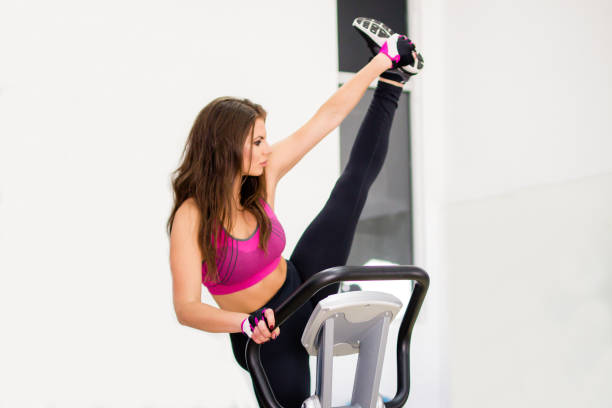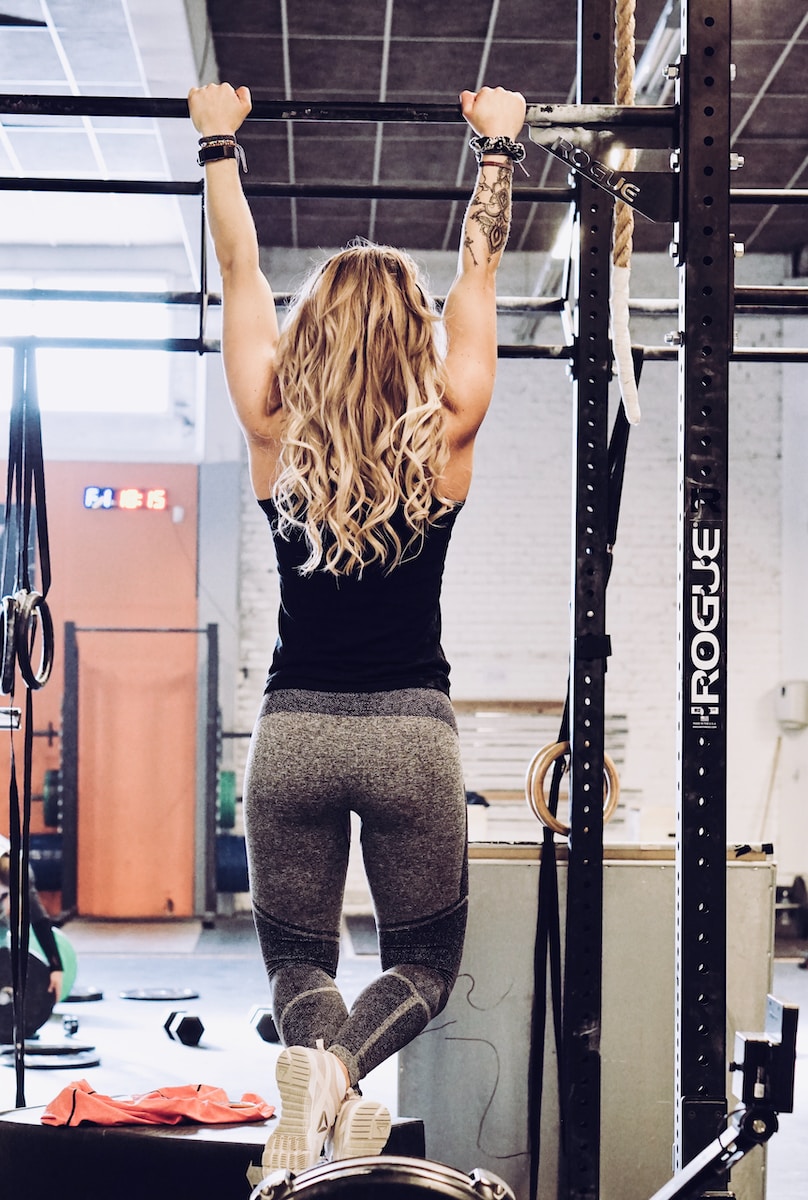
Pull-Up: 6 Exercises To Get You There
Pull-ups are a fantastic bodyweight exercise that can help you build upper body strength and improve your overall fitness level. However, if you’ve ever attempted a pull-up and found it challenging, you’re not alone. Pull-ups can be demanding, especially if you haven’t developed the necessary muscle strength.
8 Reasons We Need A Strong Upper Body (Especially As We Age):
- Improved Functional Strength: A strong upper body enhances your ability to perform everyday tasks such as lifting, carrying, pushing, and pulling objects with ease, reducing the risk of strain or injury.
- Better Posture: Upper body strength helps maintain good posture by supporting the spine and preventing slouching or rounded shoulders, reducing the risk of musculoskeletal problems.
- Enhanced Athletic Performance: Whether you’re a runner, swimmer, or participate in team sports, upper body strength contributes to improved athletic performance by providing power, stability, and balance.
- Injury Prevention: A strong upper body can protect against common injuries, especially in activities that involve sudden movements or impacts. Well-developed muscles can absorb and dissipate forces effectively.
- Improved Bone Health: Resistance training for the upper body can increase bone density, reducing the risk of osteoporosis and fractures, particularly as you age.
- Enhanced Metabolism: Building and maintaining muscle mass, including the upper body, can boost your metabolism, aiding in weight management and fat loss.
- Increased Independence: Upper body strength is essential for maintaining independence as you age. It ensures the ability to perform daily living activities without assistance.
- Mental Health Benefits: Regular upper body exercise can have positive effects on mental health by reducing stress, boosting confidence, and promoting a sense of accomplishment.
- Balanced Physique: A strong upper body complements your overall physique, helping you achieve a balanced and aesthetically pleasing appearance.
- Enhanced Cardiovascular Health: While cardio exercises are crucial for heart health, upper body strength training can also have a positive impact on cardiovascular fitness, as it allows you to perform activities with less effort.
To perform a proper pull-up, you need to target specific muscle groups:
Muscles Involved in a Pull-Up:
- Latissimus Dorsi (Lats): The primary muscle group engaged during a pull-up is the latissimus dorsi, which is the large muscle in your back. Strengthening your lats is crucial for pulling your body weight up.
- Biceps Brachii: Your biceps play a significant role in bending your elbows to bring your chin over the bar. Strong biceps are essential for a successful pull-up.
- Rear Deltoids: The rear deltoids are located in the back of your shoulders, and help stabilize your shoulders during the pull-up motion.
- Trapezius (Traps): The trapezius muscles provide support and stability to your shoulder blades, ensuring controlled and smooth movements.
- Rhomboids: These muscles, situated between your shoulder blades, help retract and stabilize your shoulder blades during the pull-up.
- Forearms and Grip Strength: Strong forearms and grip strength are essential for maintaining a secure hold on the bar throughout the exercise.

Now that you know which muscles you need to target, here are 6 exercises to strengthen these muscle groups:
1. Lat Pulldowns:
- Reps: 3 sets of 10–12 reps
- Instructions: Use a lat pulldown machine to mimic the motion of a pull-up. Start with a weight that challenges you but allows proper form.
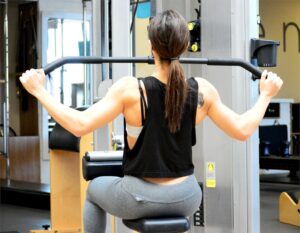
2. Bicep Curls:
- Reps: 3 sets of 12–15 reps
- Instructions: Use dumbbells or a barbell to perform bicep curls, focusing on controlled movement and a full range of motion.

3. Inverted Rows:
- Reps: 3 sets of 8–10 reps
- Instructions: Lie on your back under a barbell or TRX straps, grasp the bar or handles, and pull your chest towards the bar, mimicking the pull-up motion.
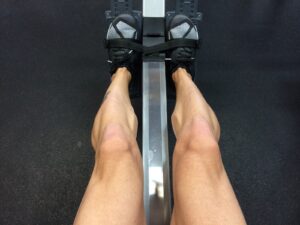
4. Face Pulls:
- Reps: 3 sets of 12–15 reps
- Instructions: Use a rope attachment on a cable machine to target the rear deltoids and rhomboids.
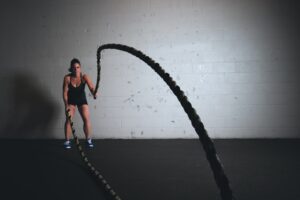
5. Shrugs:
- Reps: 3 sets of 12–15 reps
- Instructions: Use dumbbells or a barbell to perform shrugs, focusing on contracting and relaxing your trapezius muscles.

6. Farmer’s Walk:
- Reps: 3 sets of 30–60 seconds
- Instructions: Hold a heavy pair of dumbbells or kettlebells in each hand and walk for the specified time, improving grip strength and forearm endurance.
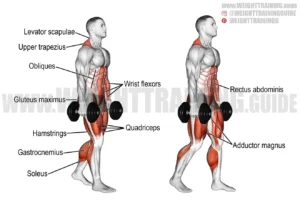
Remember to warm up before each workout and maintain proper form throughout every exercise. As your strength improves, gradually increase the weight or intensity to continue challenging your muscles. Be patient and consistent, as mastering the pull-up can take time.
You May Also Enjoy: The 12-3-30 Workout: What’s the hype about?


